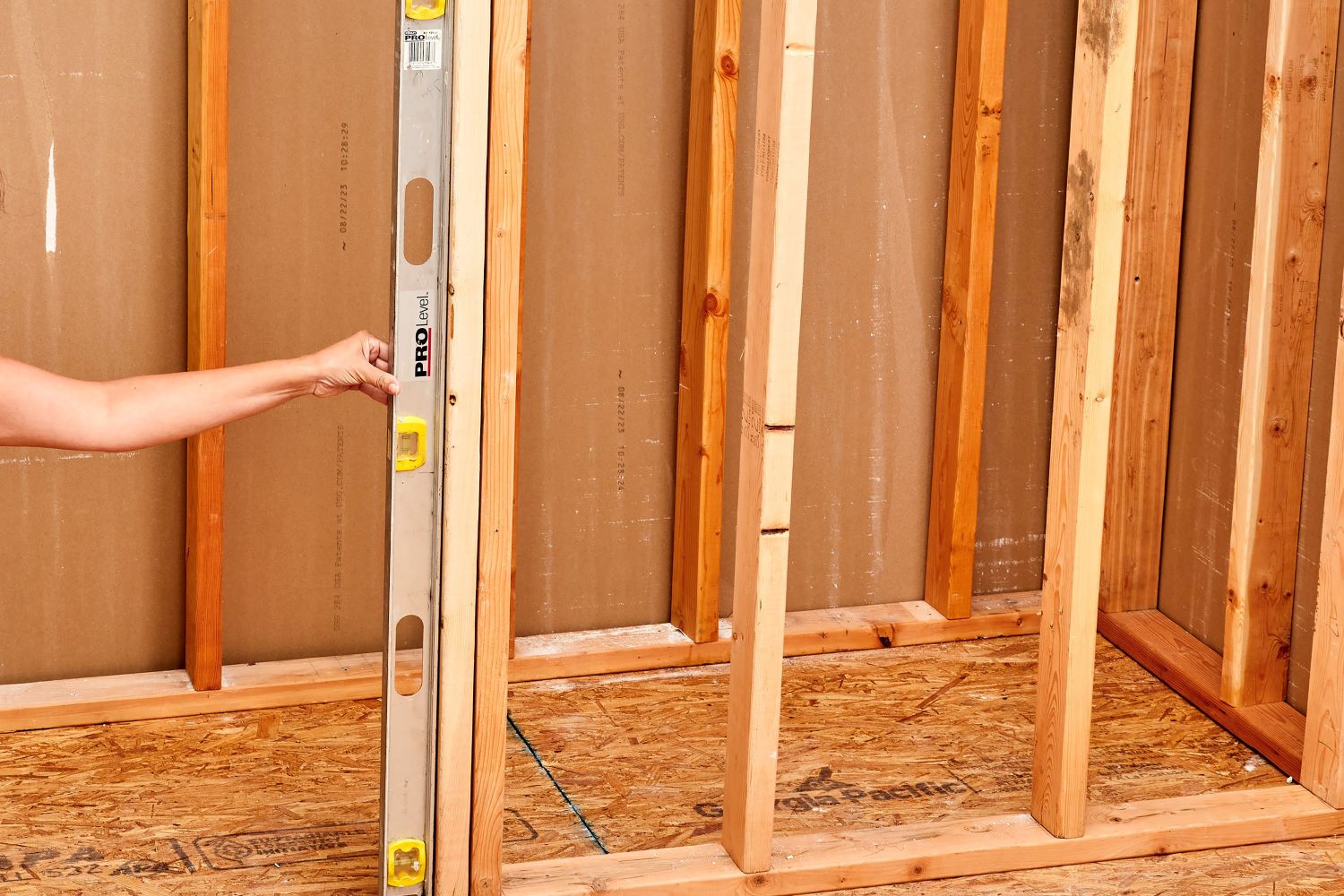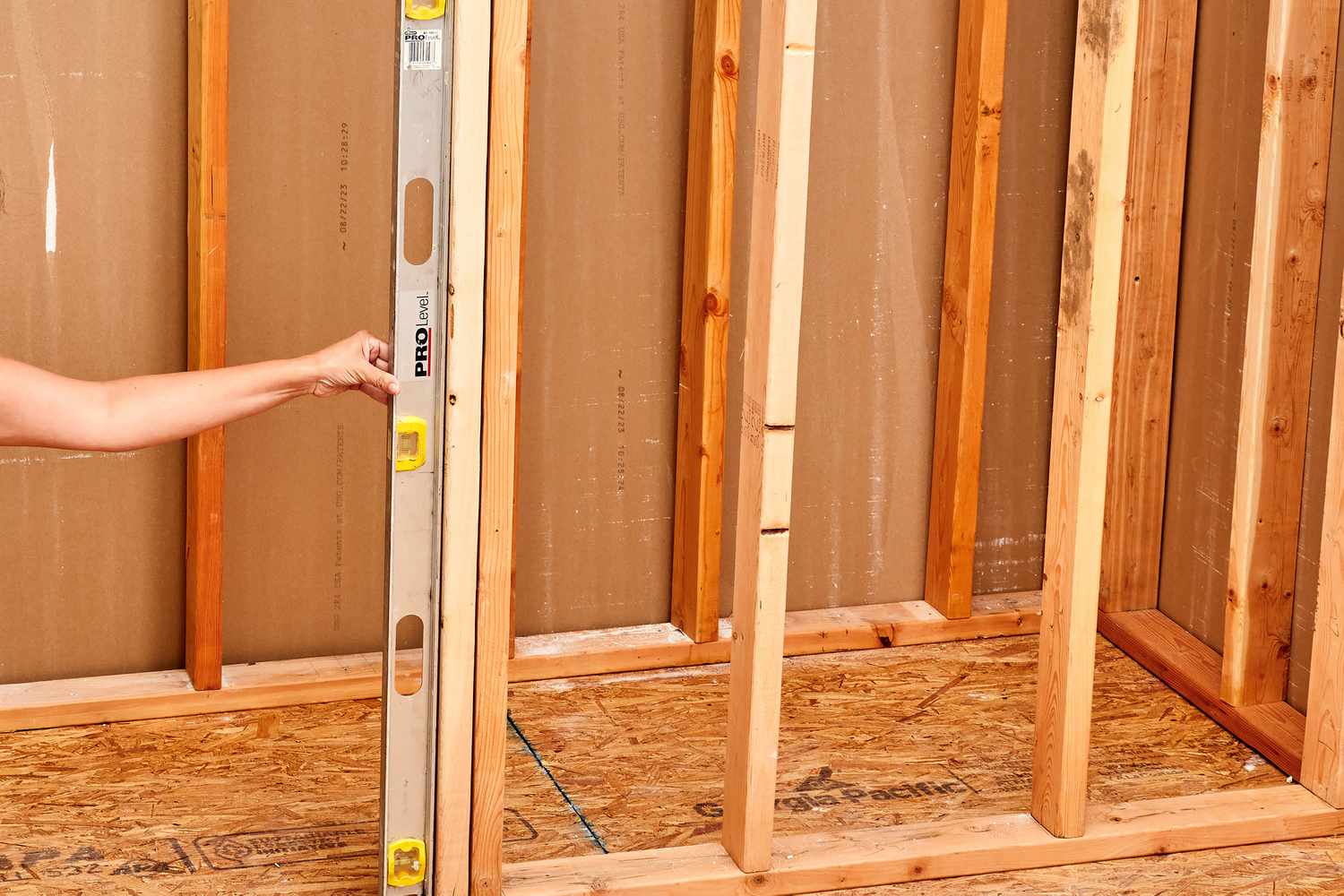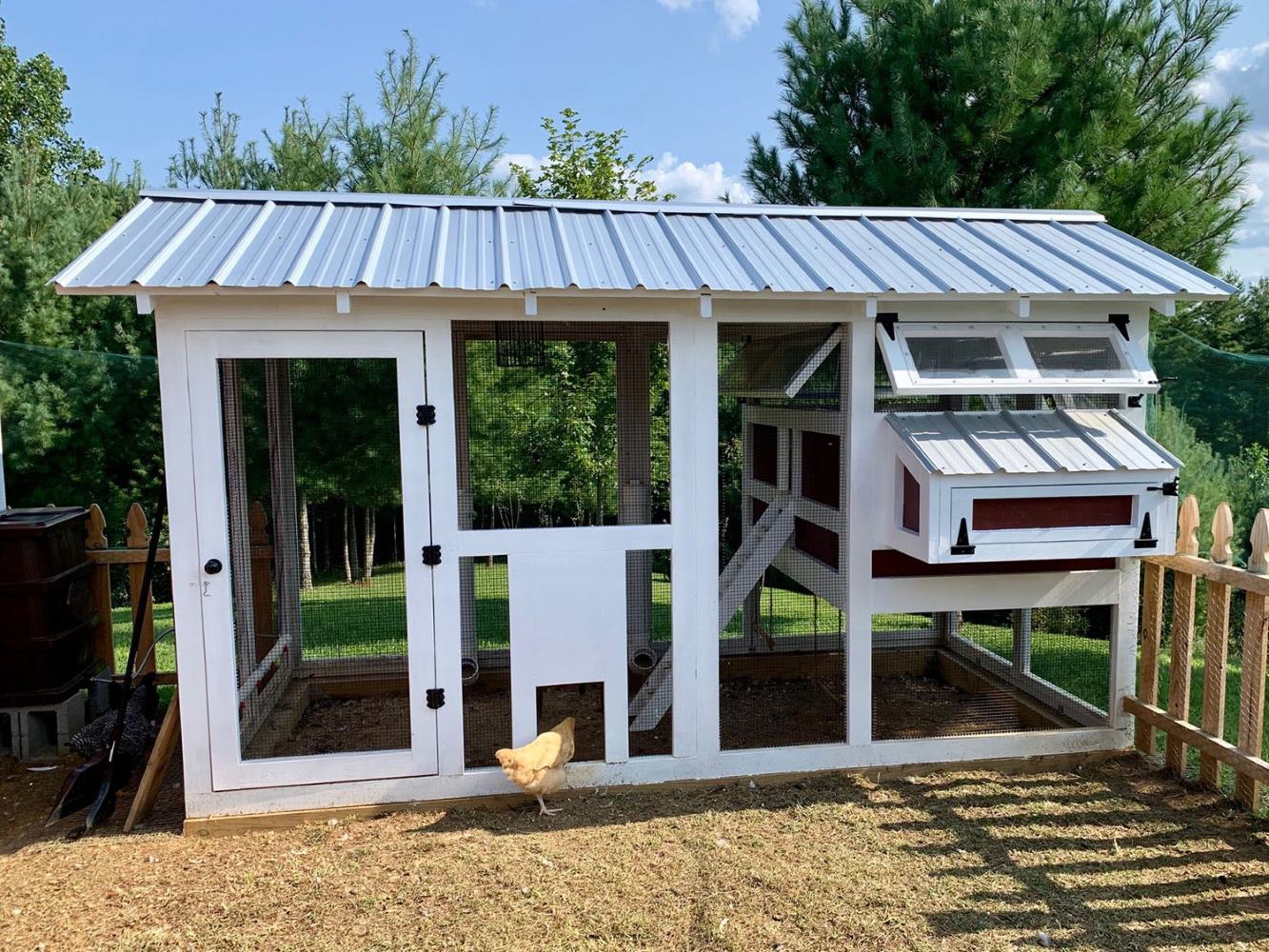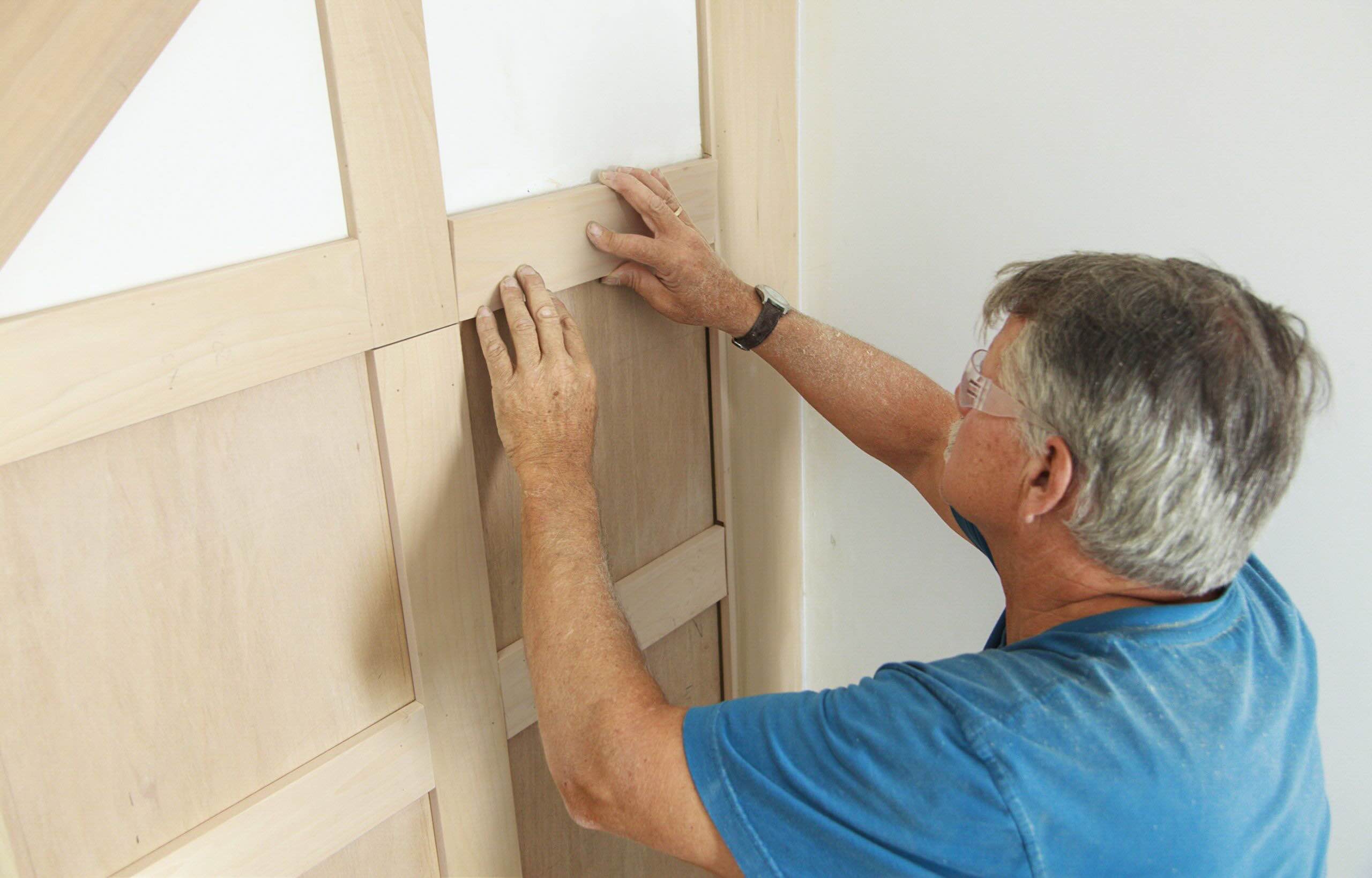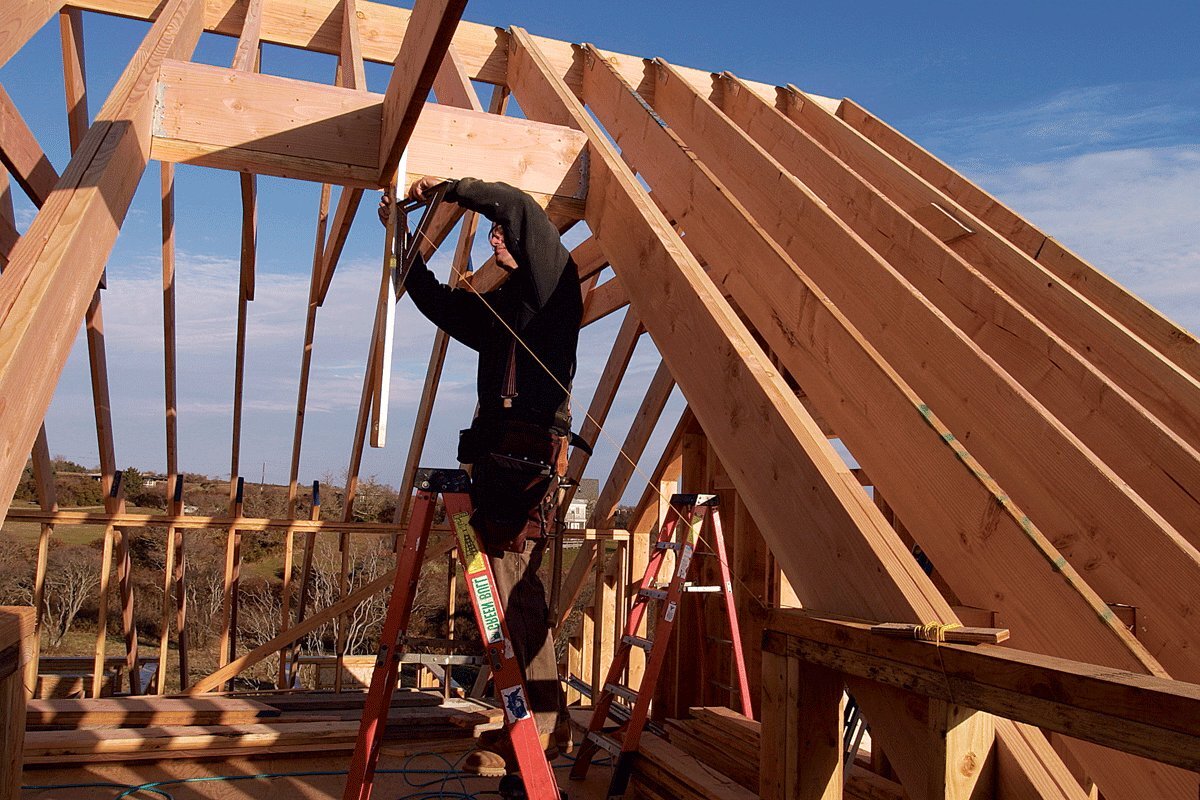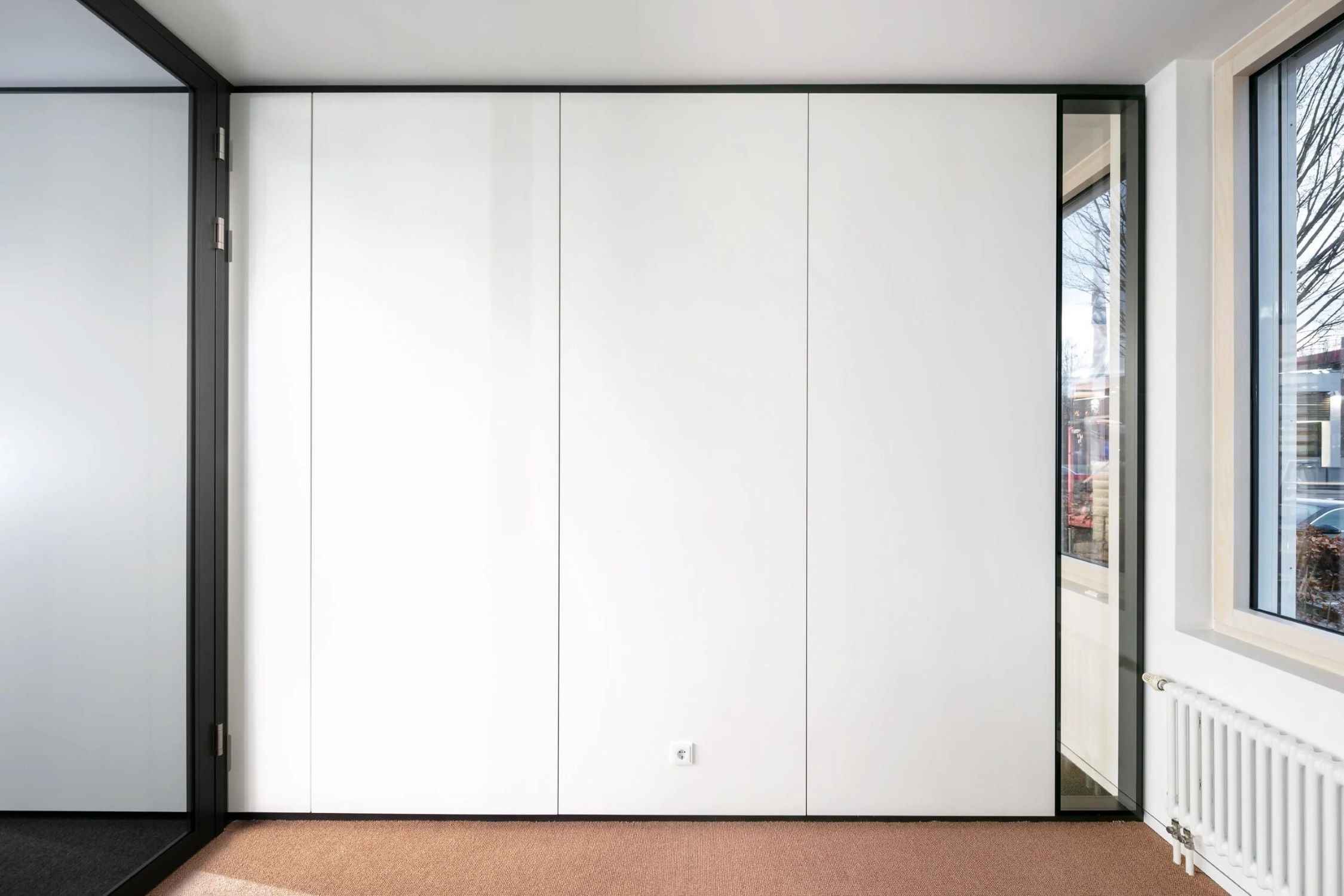Home>Create & Decorate>DIY & Crafts>How To Frame A Wall With A Door
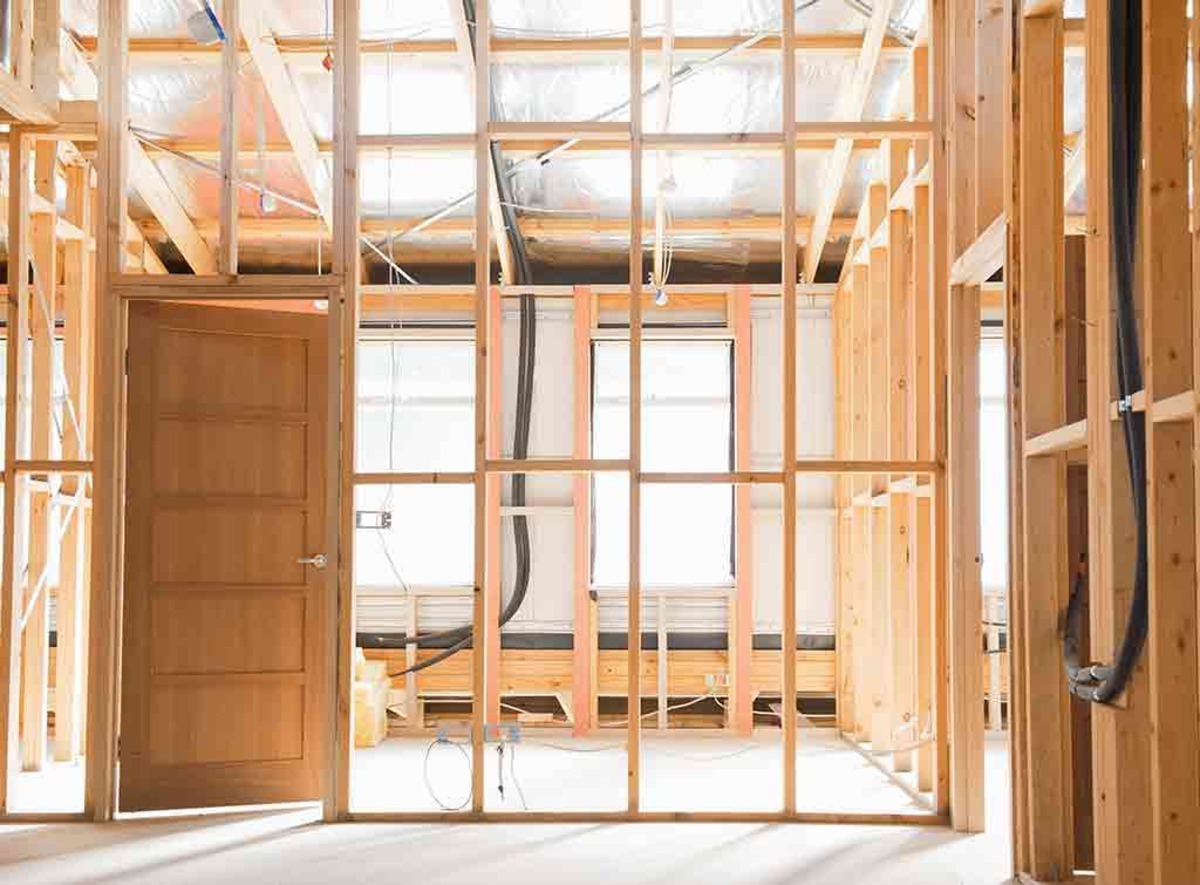

DIY & Crafts
How To Frame A Wall With A Door
Published: February 22, 2024

Content Creator specializing in woodworking and interior transformations. Caegan's guides motivate readers to undertake their own projects, while his custom furniture adds a personal touch.
Learn how to frame a wall with a door in this comprehensive DIY guide. Perfect for your next home improvement project.
(Many of the links in this article redirect to a specific reviewed product. Your purchase of these products through affiliate links helps to generate commission for Twigandthistle.com, at no extra cost. Learn more)
Introduction
When it comes to home improvement projects, framing a wall with a door is a fundamental skill that can elevate the functionality and aesthetics of a space. Whether you're renovating a room or building an addition to your home, understanding the process of framing a wall with a door is essential for creating a structurally sound and visually appealing interior. This DIY project allows you to customize your living space according to your needs and preferences, providing a sense of accomplishment and personalization.
Framing a wall with a door involves a series of precise measurements, accurate cuts, and strategic assembly. It's a hands-on endeavor that requires attention to detail and a methodical approach. By mastering this skill, you gain the ability to transform a bare space into a functional room with a seamless entryway, enhancing the overall flow and usability of your home.
In this comprehensive guide, we will walk you through the step-by-step process of framing a wall with a door, from gathering the necessary materials and tools to installing the door frame and securing the wall in place. By following these instructions, you'll be equipped with the knowledge and confidence to tackle this project with precision and efficiency. So, roll up your sleeves, gather your tools, and let's dive into the gratifying world of wall framing with a door!
Read more: How To Build A Door Frame
Step 1: Gather Materials and Tools
Before embarking on the process of framing a wall with a door, it's crucial to gather all the necessary materials and tools. Having everything at hand will streamline the construction process and minimize interruptions. Here's a comprehensive list of items you'll need:
Materials:
- Lumber: Select high-quality, straight lumber for the wall framing, including studs, plates, and headers. The dimensions of the lumber will depend on the wall's design and the door size.
- Plywood or OSB (Oriented Strand Board): This will be used for sheathing the wall, providing stability and a surface for attaching the wall covering.
- Door Frame Kit: If the door frame is not pre-assembled, ensure you have the necessary components to construct the door frame.
- Shims: These thin, wedge-shaped pieces are essential for leveling and securing the door frame.
- Nails and Screws: Stock up on an assortment of nails and screws to fasten the framing components and sheathing.
- Construction Adhesive: This will enhance the strength and stability of the wall assembly.
Tools:
- Measuring Tape: Accurate measurements are vital for ensuring the wall and door frame fit precisely.
- Level: A level is indispensable for ensuring that the wall and door frame are plumb and level during installation.
- Circular Saw or Miter Saw: These tools are essential for cutting lumber to the required dimensions.
- Hammer and Screwdriver: For driving nails and screws into the framing components.
- Power Drill: This versatile tool will be used for drilling pilot holes and driving screws.
- Safety Gear: Don't forget to prioritize safety by wearing protective gear, including goggles and gloves, when handling tools and materials.
By gathering these materials and tools, you'll set the stage for a smooth and efficient wall framing process. With everything in place, you'll be ready to move on to the next step: measuring and marking the wall layout.
Step 2: Measure and Mark Wall Layout
Accurate measurements and precise markings are the foundation of a well-constructed wall with a door. Before cutting any lumber or assembling the frame, it's essential to meticulously measure and mark the wall layout. This process ensures that the wall and door frame fit seamlessly within the designated space, setting the stage for a successful installation.
Read more: DIY Wall Decor Craft Ideas for Living Room
Measuring the Wall Space
Begin by measuring the dimensions of the wall where the framing will take place. Use a measuring tape to record the height and width of the area, taking into account any obstructions such as existing electrical outlets or switches. It's crucial to measure from the floor to the ceiling and from wall to wall accurately.
Marking the Stud Locations
Once the measurements are recorded, it's time to mark the locations for the wall studs. Standard stud spacing is 16 inches on center, meaning the center of each stud is positioned 16 inches apart. Begin by marking the location of the first stud at one end of the wall, then continue marking at 16-inch intervals across the entire length of the wall. This precise spacing ensures structural integrity and provides ample support for the wall and door frame.
Outlining the Door Opening
If the wall includes a door, outline the dimensions of the door opening based on the door size and type. Use a straightedge and a pencil to mark the top and bottom of the door opening, ensuring that the lines are level and plumb. Additionally, mark the locations for the door frame components, including the header and the king studs on either side of the opening.
Double-Checking Measurements
Before proceeding to the next step, double-check all measurements and markings to ensure accuracy. Use a level to confirm that the lines are plumb and level, and make any necessary adjustments to guarantee precise alignment.
By meticulously measuring and marking the wall layout, you establish a solid foundation for the subsequent steps of cutting and assembling the wall frame. This attention to detail is instrumental in achieving a professional-quality result and a seamless integration of the door within the framed wall. With the wall layout accurately defined, you're ready to progress to the next phase of cutting and assembling the wall frame.
Read more: How to Replace a Dining Room Door Frame
Step 3: Cut and Assemble Wall Frame
With the wall layout meticulously measured and marked, it's time to transition to the pivotal phase of cutting and assembling the wall frame. This step involves transforming the raw materials into a structured framework that will define the shape and stability of the wall, including the space for the door. Here's a detailed breakdown of the process:
Cutting Lumber to Size
Using the precise measurements and markings from the previous step, begin by cutting the lumber to the required dimensions. A circular saw or miter saw is indispensable for achieving clean, accurate cuts. Cut the studs, plates, and headers according to the specified lengths, ensuring that each piece fits seamlessly within the designated space.
Assembling the Wall Frame
Once the lumber is cut to size, it's time to assemble the wall frame. Start by laying out the bottom plate on the floor, positioning it according to the marked stud locations. Secure the studs vertically onto the bottom plate, aligning them with the marked intervals. Use a level to ensure that the studs are plumb and securely fasten them to the bottom plate.
Next, install the top plate by aligning it with the top ends of the studs. This creates a unified framework that forms the vertical structure of the wall. Additionally, incorporate the headers above the door opening, ensuring they are securely positioned to support the weight above the door.
Adding Sheathing
With the wall frame assembled, it's time to add sheathing to provide stability and a surface for attaching the wall covering. Cut the plywood or OSB to fit the dimensions of the wall frame and secure it to the studs using nails or screws. This sheathing reinforces the structure of the wall, enhancing its durability and rigidity.
Read more: How to Build an Arch Door Frame
Installing the Door Frame
If the door frame is not pre-assembled, this is the opportune moment to construct and install it within the designated opening. Follow the manufacturer's instructions to assemble the door frame components, ensuring that it fits snugly within the outlined door opening. Use shims to level and secure the door frame in place, verifying that it is plumb and operates smoothly.
By meticulously cutting and assembling the wall frame, you establish the foundational structure for the wall with a door. This phase requires precision and attention to detail to ensure that the components fit seamlessly and form a sturdy framework. With the wall frame in place, you're ready to progress to the subsequent step of securing the wall frame in place.
Step 4: Install Door Frame
Installing the door frame is a pivotal step in the process of framing a wall with a door. This phase involves integrating the door frame within the designated opening, ensuring a seamless and secure fit that aligns with the overall wall structure. Here's a detailed breakdown of the installation process:
Preparing the Door Frame Components
Before installing the door frame, it's essential to prepare the components for seamless integration. If the door frame is pre-assembled, ensure that all the necessary parts, including the jambs, header, and threshold, are aligned and ready for installation. If the door frame requires assembly, carefully follow the manufacturer's instructions to construct the frame, ensuring precise alignment and secure connections.
Positioning the Door Frame
Begin by positioning the door frame within the outlined opening, ensuring that it fits snugly and aligns with the markings for the top and sides of the doorway. Use a level to verify that the frame is plumb and a straightedge to confirm that it is aligned with the surrounding wall. This meticulous positioning is crucial for ensuring that the door operates smoothly and integrates seamlessly with the wall frame.
Read more: How to Build DIY Door Casing
Securing the Door Frame
Once the door frame is positioned correctly, it's time to secure it in place. Use shims to fill any gaps between the frame and the surrounding wall, ensuring that the frame is level and plumb. Secure the frame by driving nails or screws through the shims and into the wall studs, anchoring the frame firmly in place. Pay close attention to the corners and edges, ensuring that the frame is securely fastened from all angles.
Verifying Smooth Operation
After securing the door frame, test the operation of the door within the frame. Open and close the door to ensure that it moves smoothly without any obstructions or misalignments. Make any necessary adjustments to the frame or hinges to guarantee seamless operation, taking care to address any issues that may impede the functionality of the door.
By meticulously installing the door frame, you ensure that the doorway integrates seamlessly within the framed wall, providing a functional and visually appealing entryway. This phase requires precision and attention to detail to ensure that the door frame aligns with the surrounding structure and operates smoothly. With the door frame securely in place, the next step involves securing the wall frame to complete the process of framing a wall with a door.
Step 5: Secure Wall Frame in Place
With the wall frame and door frame meticulously assembled and integrated, the final step in framing a wall with a door is to secure the wall frame in place. This crucial phase ensures that the constructed framework is firmly anchored, providing structural stability and longevity to the entire assembly.
Attaching the Wall Frame to the Floor and Ceiling
Begin by securing the bottom plate of the wall frame to the floor using appropriate fasteners, such as nails or screws. This anchoring ensures that the wall remains firmly rooted and prevents shifting or movement over time. Similarly, secure the top plate of the wall frame to the ceiling or overhead structure, ensuring that it is firmly attached and aligned with the vertical studs.
Read more: How to Build Aluminum Storm Window Frames
Reinforcing Wall Corners and Intersections
Pay special attention to reinforcing the corners and intersections of the wall frame. Utilize metal framing anchors or braces to strengthen the connections where vertical studs meet the top and bottom plates. This reinforcement minimizes the risk of structural weaknesses at critical junctures, enhancing the overall integrity of the wall assembly.
Adding Cross-Bracing for Stability
In situations where the wall is particularly long or tall, consider incorporating cross-bracing between the studs to enhance stability. Diagonal braces made from lumber or metal can be installed to prevent lateral movement and sway, especially in areas prone to high winds or seismic activity. This additional bracing fortifies the wall frame, reducing the risk of deformation or instability.
Inspecting and Adjusting for Alignment
Once the wall frame is secured, conduct a thorough inspection to ensure that all components are aligned, plumb, and level. Use a level to verify the vertical alignment of the studs and ensure that the wall is straight and true. Make any necessary adjustments to correct misalignments or discrepancies, guaranteeing a uniformly secure and well-aligned wall frame.
Applying Construction Adhesive for Added Strength
To further fortify the wall frame, consider applying construction adhesive along the seams and connections of the framing components. This adhesive enhances the bond between the lumber and reinforces the structural integrity of the wall assembly, providing an additional layer of strength and durability.
By meticulously securing the wall frame in place, you establish a robust and stable foundation for the framed wall with a door. This phase is essential for ensuring the long-term structural integrity and performance of the constructed wall, providing a solid framework for the surrounding space.
With the wall frame securely anchored, the process of framing a wall with a door is complete, culminating in a professionally constructed and functional interior structure that enhances the usability and aesthetics of the space.
Conclusion
Framing a wall with a door is a gratifying endeavor that combines precision, creativity, and practicality. As you conclude this transformative DIY project, take pride in the craftsmanship and attention to detail that have culminated in a structurally sound and visually appealing interior space. By following the step-by-step process outlined in this guide, you have acquired the essential skills and knowledge to undertake this task with confidence and proficiency.
As you stand back and admire the newly framed wall with its seamlessly integrated door, take a moment to appreciate the impact of your efforts. Beyond the tangible results, this project embodies the spirit of personalization and customization, allowing you to tailor your living space to suit your unique preferences and needs. The door within the framed wall serves as a gateway to both functionality and creativity, symbolizing the potential for transformation and renewal within your home.
Moreover, the process of framing a wall with a door transcends the mere construction of physical structures. It represents a journey of empowerment and self-reliance, empowering you to take ownership of your living environment and actively participate in its enhancement. The skills you have honed throughout this project extend beyond the realm of home improvement, fostering a sense of capability and resourcefulness that can be applied to various aspects of your life.
As you reflect on the meticulous measurements, precise cuts, and strategic assembly that have brought this project to fruition, recognize the value of patience and perseverance in achieving your desired outcome. Every step, from gathering materials to securing the wall frame, has contributed to the creation of a space that embodies both functionality and aesthetic appeal.
In essence, framing a wall with a door embodies the fusion of craftsmanship and creativity, resulting in a tangible manifestation of your vision for your living space. The door within the framed wall beckons with the promise of new possibilities and experiences, inviting you to cross the threshold into a space that reflects your ingenuity and dedication.
With the completion of this project, you have not only expanded your DIY skill set but also enriched your connection to your living environment. The framed wall with a door stands as a testament to your ability to transform raw materials into a purposeful and harmonious structure, embodying the essence of creativity and practicality.
As you embark on future endeavors, may the knowledge and experience gained from framing a wall with a door continue to inspire and empower you, serving as a reminder of the transformative potential within your hands and the boundless opportunities for personal expression within your living space.

